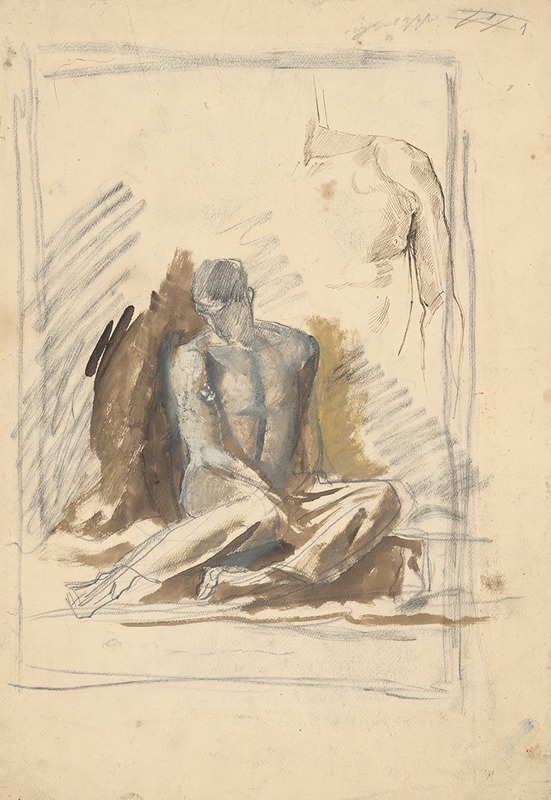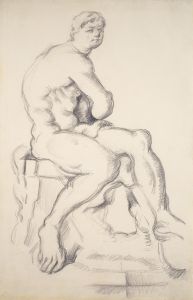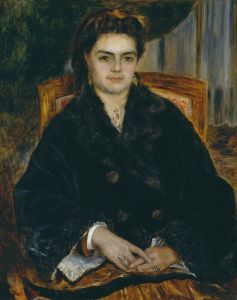
A study of a seated figure of a man
A hand-painted replica of Ladislav Mednyánszky’s masterpiece A study of a seated figure of a man, meticulously crafted by professional artists to capture the true essence of the original. Each piece is created with museum-quality canvas and rare mineral pigments, carefully painted by experienced artists with delicate brushstrokes and rich, layered colors to perfectly recreate the texture of the original artwork. Unlike machine-printed reproductions, this hand-painted version brings the painting to life, infused with the artist’s emotions and skill in every stroke. Whether for personal collection or home decoration, it instantly elevates the artistic atmosphere of any space.
Ladislav Mednyánszky, a prominent Hungarian painter of the late 19th and early 20th centuries, is known for his evocative and often somber works that explore themes of human existence and the natural world. One of his notable works, "A Study of a Seated Figure of a Man," exemplifies his skill in capturing the depth of human emotion and the subtleties of the human form.
Mednyánszky was born on April 23, 1852, in Beckov, which was then part of the Kingdom of Hungary. He came from an aristocratic family, which afforded him the opportunity to pursue his artistic interests from a young age. He studied at the Academy of Fine Arts in Munich and later in Paris, where he was influenced by the prevailing artistic movements of the time, including Impressionism and Symbolism. Despite these influences, Mednyánszky developed a distinctive style characterized by a muted color palette and a focus on mood and atmosphere.
"A Study of a Seated Figure of a Man" is a testament to Mednyánszky's ability to convey the inner life of his subjects. The painting depicts a solitary male figure seated in a contemplative pose. The use of light and shadow in the work highlights the figure's introspective expression, suggesting a moment of deep thought or reflection. Mednyánszky's brushwork is both delicate and expressive, capturing the texture of the man's clothing and the subtle play of light across his features.
The background of the painting is understated, allowing the viewer to focus entirely on the seated figure. This compositional choice is typical of Mednyánszky's work, where the environment often serves to enhance the emotional resonance of the subject rather than distract from it. The simplicity of the setting also underscores the universality of the human experience, a recurring theme in Mednyánszky's oeuvre.
Throughout his career, Mednyánszky was deeply interested in the human condition, often depicting marginalized individuals such as peasants, soldiers, and the homeless. His empathetic portrayal of these subjects reflects his belief in the inherent dignity of all people, regardless of their social status. "A Study of a Seated Figure of a Man" can be seen as part of this broader exploration of humanity, capturing a moment of quiet introspection that speaks to the shared experiences of contemplation and solitude.
Mednyánszky's work was well-regarded during his lifetime, and he exhibited widely across Europe. However, his reputation waned in the years following his death on April 17, 1919. In recent decades, there has been a renewed interest in his work, with scholars and art enthusiasts recognizing his contributions to the development of modern European art. His paintings are now held in major collections, including the Hungarian National Gallery in Budapest.
In summary, "A Study of a Seated Figure of a Man" is a compelling example of Ladislav Mednyánszky's artistic vision. Through his masterful use of light, shadow, and composition, Mednyánszky captures the essence of human introspection, inviting viewers to reflect on their own experiences of solitude and contemplation. The painting stands as a testament to Mednyánszky's enduring legacy as an artist who sought to illuminate the depths of the human soul.


















